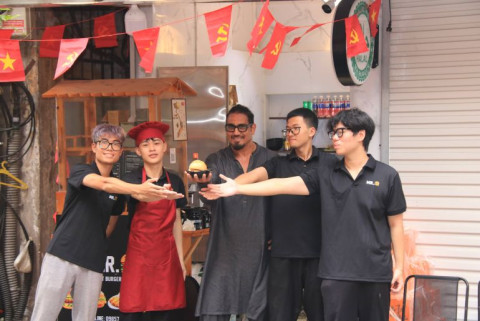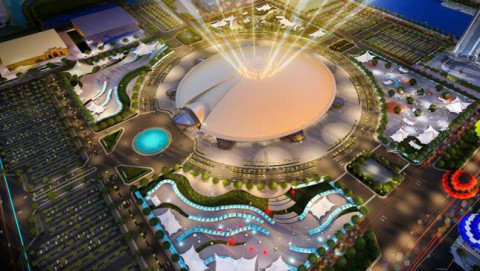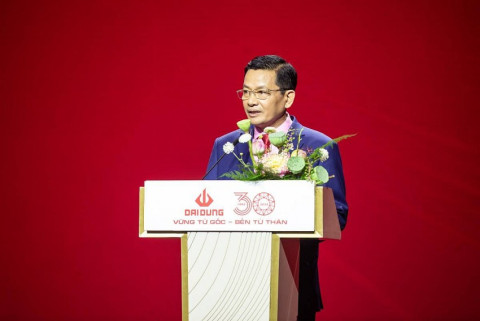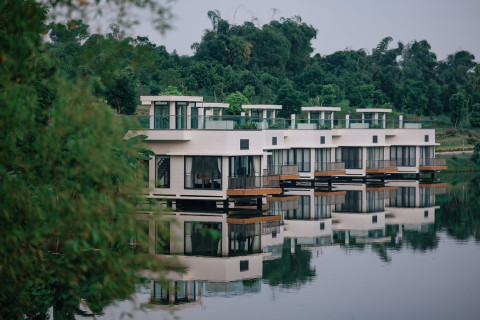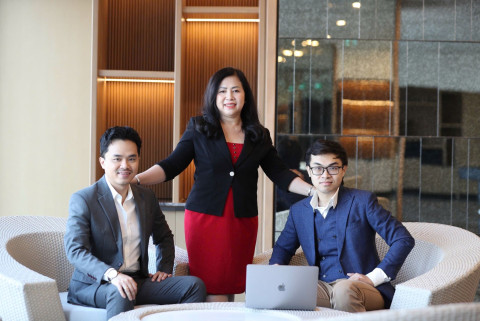The new generation Ford Ranger: Affirming the power and ability to operate on all terrains to a new level
- 145
- Brand
- 19:49 18/09/2022
DNHN - The Ford Ranger is a pickup truck that has earned a global reputation for its durability and outstanding performance. More and more customers trust Ranger to use for many years, for both work and entertainment needs.

Ford has continued to strengthen customer confidence in the Ranger by listening to owners and delivering the features that matter most to them. This is even more evident in the New Generation Ranger - a vehicle that offers customers outstanding towing and handling capabilities, and incredible off-road capability with a durable and fuel-efficient engine.
“With the new Ranger, the goal of the product development team is to deliver a vehicle that meets the needs of customers in more than 180 different markets, at the same time becoming the only pickup truck the world trusts to solve all problems. And to be a pickup truck trusted by the world, the New Generation Ranger must excel in many important factors such as overall shape and stability, traction, off-road ability, efficiency, and performance. driving performance and feel,” said Graham Pearson, Ranger Product Program Manager.
“Ford is knowledgeable and experienced in trucks. We want to provide our customers with a vehicle that delivers better performance, reinforcing Ford's reputation for creating cars that do the job, while providing customers with a desirable lifestyle with a pickup truck with outstanding styling, advanced technology and comfort,” added Mr Graham Pearson.
The right powertrain for work, home and play
Pritika Maharaj, Ranger and Everest Program Manager, said that whether a customer's priority is fuel economy, refinement, towing or heavy duty, the new Ranger's powertrains provide customers with the very best performance and operability.
The new generation Ranger will continue to offer a choice of Single Turbo and Bi-Turbo 2.0 inline 4-cylinder diesel engines.
The Single Turbo engine has 170PS (at 3,500rpm) & 405 Nm of torque (at 1,750-2,500rpm).
Ford's trusted 2.0-liter Bi-Turbo engine produces 210PS at 3,750 rpm and 500 Nm of torque from 1,750-2,000 rpm and will continue to be available on Everest. This intelligent engine can determine the optimal operating mode because the turbochargers can operate in series or the engine can completely ignore the small turbocharger, favouring the large turbocharger to provide higher capacity.
“We know our customers will take their Ranger to the extreme, so we tested the car just like that,” said Maharaj. First, we pushed the car to the limit on the dyno table, where the car was subjected to heavy loads, extreme temperatures and operating cycles. We then test the vehicle in real-world environments, from cold regions like Europe and New Zealand to hot and humid markets in Southeast Asia. Whether it is a 2.0L Single-Turbo or a Bi-Turbo engine, we simulate customer usage by running these engines for more than 700 hours continuously and at full throttle. That's like going around the world six times and always hitting full throttle. And we do it in temperatures from -40 degrees Celsius to more than 50 degrees Celsius,” shared Pritika Maharaj.

Transmission choices include the 10-speed automatic transmission used on the Ford F-150 and F-150 Raptor and have passed more than six million kilometres of testing, including more than 3,900 kilometres of off-road tracks, including at the Baja 1000 racetrack. This transmission is used with the same 2.0-litre Bi-Turbo engine, on the Ranger and Everest.
Ranger will continue to be equipped with the current six-speed automatic transmission. Next to it is a new six-speed manual transmission for the Single Turbo diesel variants. The new manual transmission has been in development for four years across four continents and boasts a new set of gears for smoother shifting.
Ready for off-road roads
“Our customers have shared that one of the reasons they love the Ranger is because it's one of those cars that offer as much comfort on asphalt and as easy handling as a car. So maintaining that and balancing it with off-road performance was key throughout the development of the next-generation Ranger. In addition, increasing the length and wheelbase by 50mm for the new generation Ranger has enhanced the vehicle's stability on both asphalt and off-road. This also increases the front approach angle to 30 degrees (from 28.5 degrees in the current generation) and rear exit to 23 degrees (up from 21 degrees in the current generation)”, Rob Hugo, Supervisor Ranger Product Dynamic Experience, said.
Moreover, the increase in wheelbase helped the team increase the width of the new generation Ranger's trunk for more flexible loading space, the rear shock absorbers have been taken out of the spring system, helping to better control of the vehicle whether the vehicle is fully loaded or unladen.
The new generation Ranger is equipped with a basic four-wheel drive system that is a 'part-time' system with a two-speed electronic transmission box and 2H, 4H and 4L operating modes. In addition, the Ranger continues to be equipped with an electronic rear differential lock that can be activated via the SYNC® display. The locking differential allows both wheels on one axle to rotate at the same speed, providing extra traction when you're off-road.
Optional driving modes for increased ride confidence
Previously only the Ranger Raptor was equipped with optional driving modes, but now the New Generation Ranger will offer up to six modes. The asphalt running modes include Normal (normal), Eco (Fuel economy), Tow / Haul (Drag/Heavy load) (automatic transmission only), and Slippery (Slippery). Besides, the terrain modes include Mud / Ruts (Mud / Deep Trench) and Sand (Sand road). These modes adjust everything from gear shifting to throttle response, traction and stability control, ABS and more.
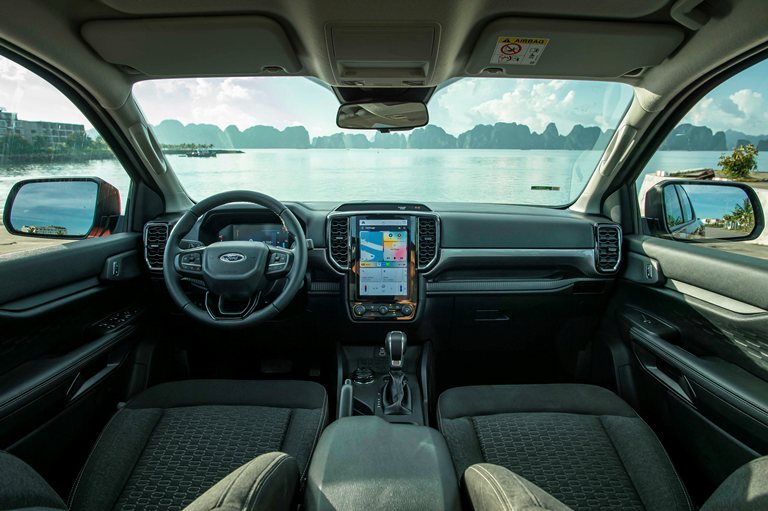
Tow/Haul (Pull / Heavy) mode is a completely new driving mode and is designed for those who tow or load heavy with their Ranger. Selecting the Tow/Haul mode optimizes gearshift times to maintain power when you're climbing uphill, or provides consistent engine braking when you're travelling downhill. The New Generation Ranger continues to have a maximum towing capacity of 3,500 kg with a payload limit of 350 kg.
In addition to the optional driving modes, the New Generation Ranger boasts a dedicated off-road display on the SYNC infotainment system. With the push of a button, owners can access the off-road SYNC display, which displays steering and differential lock settings, vehicle steering and tilt angles, as well as a front camera view with simulated road wheel tracks.
Always running strong
The engine compartment also has a dedicated space for customers to install a second battery and power accessories when camping.
The New Generation Ranger is ready for any adventure thanks to a roof rack that can hold up to 350 kg in parking and 85 kg in motion. The trunk also has a variety of storage space management solutions that make the New Generation Ranger the most versatile ever, including tie-down points, beautifully designed side rails, trunk doors with clamping points and side braces have 6 points that can be used to attach accessories. Depending on the version, the payload of the New Generation Ranger ranges from 681-808 kg.
Like the current generation Ranger, the new Ranger is capable of wading up to 800mm at a speed of 7km/h.
“Many customers want to use Ranger to traverse flooded areas such as rivers and the like. So we tested the car at a variety of speeds, moving backwards and the Ranger excelled in flooding up to 800mm. In addition, physical tests were conducted after a series of technical tests through computer software, Ford's team also ensured that the aerodynamics of the car worked well when moving on land as well as when wading while ensuring that water cannot get into important systems on the vehicle or other details such as lights and horns,” said Hugo.
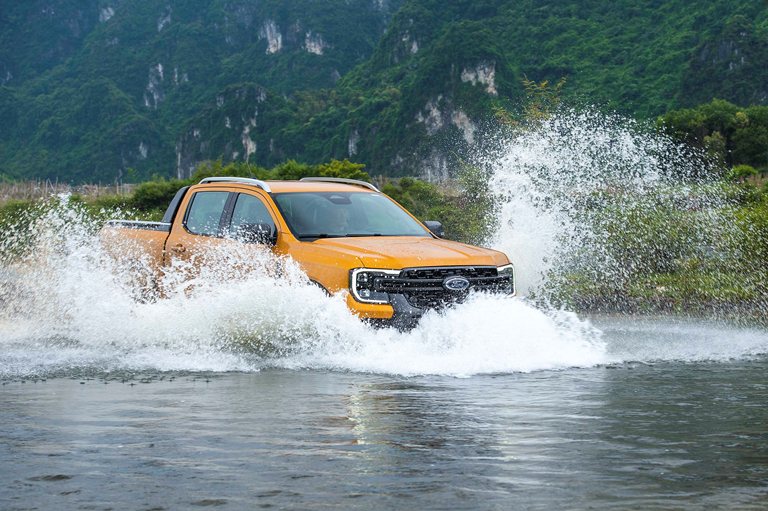
Experiment to the limit
The New Generation Ford Ranger has undergone millions of kilometres of testing in 10 different countries. All to ensure the vehicle not only meets but also exceeds customer expectations in terms of performance, quality, reliability and durability.
Even prototypes of the Ford Ranger have travelled thousands of kilometres at Ford's You Yangs test facility located near Melbourne, Australia. Here tests are carried out 24/7 on specific components such as the suspension, body structure and powertrain.
Before the physical tests were carried out, Ford used a lot of computer simulations throughout the development process, said John Willems, chief engineer of the New Generation Ranger program. This helps optimize critical components and systems, minimizing road noise and noise from components emitted when the vehicle is operating inside the cabin.
“From the very beginning of the development of the New Generation Ranger, many tests using computer software were carried out to obtain the necessary statistics. Since then, we've built 200 Ranger prototypes to undergo challenging tests, ranging from the dusty atmosphere of the Australian wilderness, the hot dryness of the Middle East, and the wet streets and highways in Thailand, to sub-zero temperatures in Europe and North America.
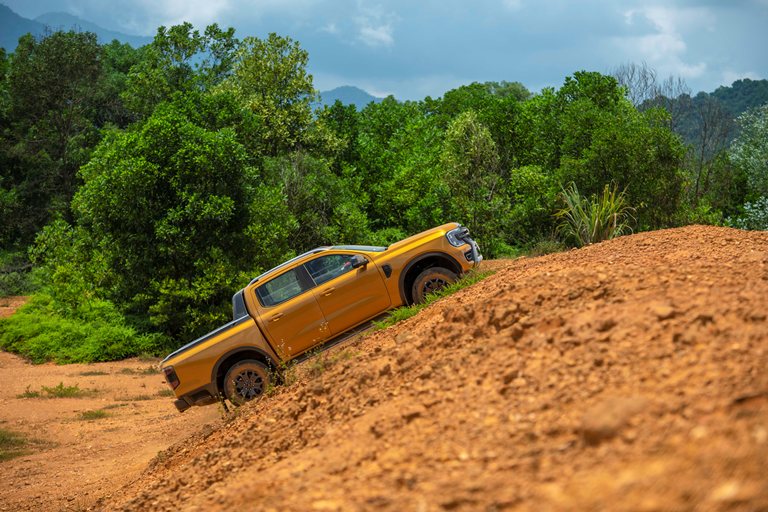
“We recreated the exact conditions in which customers could use the Ranger, to ensure that the new Ranger as soon as it leaves the showroom can immediately cope with any driving situation, whether on the asphalt or when off-road,” Mr Willems shared. “These conditions include extreme humidity in Southeast Asia, frigid weather in New Zealand and temperatures of up to 50 degrees in the Middle East.”
Besides putting the whole car to the test, many other tests focused on each part, from the suspension system, the trailer towbar, the chassis system, the side doors, the cargo door, body, bumper, each seat position and many other points that customers can feel, touch, press or close strongly while using. All of these parts are tested and deliberately destroyed in a controlled environment, thereby helping to find potential weaknesses.
“The purpose of rigorous testing is to ensure these components operate reliably, safely and reliably throughout the product lifecycle. We know that customers will travel several thousand kilometres in their Rangers, under extreme conditions, so we need to ensure that the pickup remains a safe and quiet place for them,” Mr Williams said.
Thanh Chau
Related news
- Connecting Leaders, Shaping the Future: Strategic Leadership Planning Meeting – CorporateConnections Hanoi A
- Sunlight - Unilever Vietnam Recognized for Outstanding Contributions to the National Initiative Supporting Women Entrepreneurs
- Deputy Prime Minister Nguyễn Chí Dũng: “The country’s major challenges weigh heavily on my mind — and we must resolve them together.
- Unitsky String Technologies signs cooperation agreements with three Vietnamese partners, opening a new direction for smart mobility and sustainable development
- When artists do business – livelihood is no poetry!
- Before the D‑day to abolish flat‑rate tax: Fear of technology and costs leave small traders struggling to adapt
- Vietnamese enterprises at a crossroads: the impact of a potential US–China deal
- "Digital technicians" must not be forgotten if Vietnam aims to meet its strategic goals
- HDBank: Impressive profit growth, leading in profitability and advancing international integration
- TNI King Coffee sued for over VND 5 Billion in unpaid debts
- VINASME and Jeonnam Technopark Sign MOU on technology cooperation, human resource training, and trade promotion
- Vietnamese entrepreneurs strengthen ASEAN connectivity in the digital iIntegration era
- Prime Minister: Vietnam aims to become a regional logistics hub
- Vietnam upgraded to Secondary Emerging Market by FTSE Russell
- Hanoi’s economy grows 7.92% in first nine months of 2025, FDI surges nearly threefold
- Vietnam’s strong gdp growth fails to ease labor market distress
- US tariffs on Brazil propel Vietnam’s pangasius into global spotlight
- VietLeap AI Accelerator launches: A strategic springboard for Vietnam’s AI startups
- CICON expands strategic alliances: A new step forward in Vietnam–Korea business connectivity
- What must Vietnamese enterprises do to maintain their position in the global supply chain?
Đọc thêm Brand
Hoàng Hải Anh and his young peers launch MR. Burgers – a Halal dining destination in Hanoi
At the age of 18, Hoàng Hải Anh (Haris) and his friends have introduced MR. Burgers, bringing the clean Halal food experience to visitors in Hanoi.
SK Innovation and HD Hyundai (South Korea) step up cooperation with Khánh Hòa Province (Vietnam)
The new cooperation and investment expansion plans of South Korea’s leading conglomerates reaffirm Khánh Hòa’s growing appeal in the eyes of international investors.
A trade fair organizer surprises by joining the ranks of top-earning listed companies
Financial results for Q2 and the first half of 2025 have been announced by numerous companies listed on the Vietnamese stock market.
HDBank secures USD 215 million syndicated loan from JICA, SMBC, and FinDev Canada
HDBank has signed a syndicated loan agreement worth USD 215 million with three international financial institutions: Sumitomo Mitsui Banking Corporation (SMBC), FinDev Canada, and the Japan International Cooperation Agency (JICA).
Sao Mai Group’s pangasius export segment embraces new opportunities
IDI – a member of Sao Mai Group – is building its third factory, aiming to significantly enhance export capacity to capitalize on new opportunities in the U.S. market.
The foundational mark of pioneers in renewable energy amidst an evolving legal framework
Vietnam’s renewable energy journey was marked by bold early investment at a time when the legal framework was still taking shape.
LAMORI – The Spirit of Lam Kinh in Every Breath
LAMORI is more than a luxury retreat—it is a harmonious convergence of boundless nature and sacred historical roots.
The Đại Dũng Group: A 30-Year journey of developing a sustainable value chain
In the context of globalization and sustainable development trends, Đại Dũng Group stands out with its 30-year journey in the fields of mechanical manufacturing, construction, and steel structure.
Rediscovering connection – a journey of discovery at LAMORI
LAMORI Resort & Spa is more than just a retreat; it is a destination for souls seeking reconnection, where every moment brings a meaningful experience.
Southern Vietnamese woman takes Ngoc Linh netted rice paper to all corners of the world
The Cai Be craft village has long been famous for many specialties of the Southern region of Vietnam. However, if it weren't for an unexpected event over 20 years ago, people would not know how Ngoc Linh netted rice paper has spread globally.


